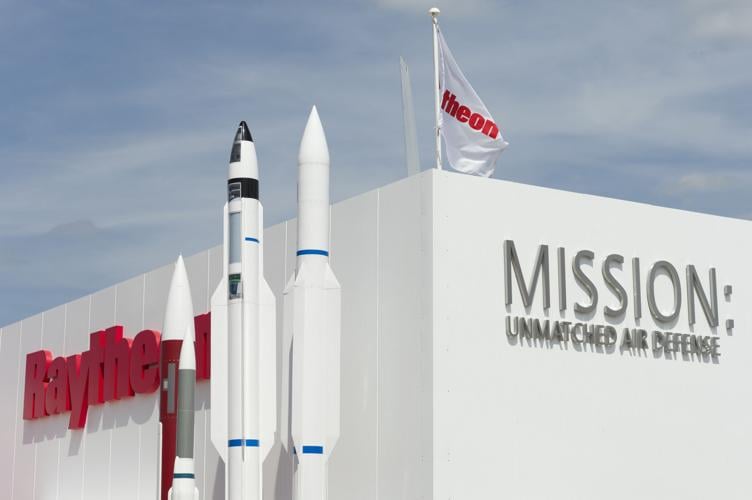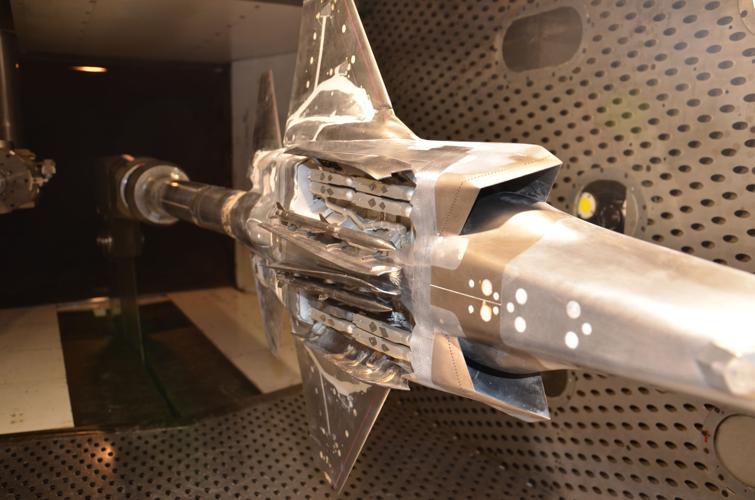Tucson-based Raytheon Missile Systems will highlight its weapons for the F-35 stealth fighter jet and tout its missile-defense systems for Europe next week at the 52nd Paris Air Show.
Raytheon, a top supplier of missiles to the U.S. and its allies, is a regular exhibitor at numerous military trade shows as well as broader aerospace events that include defense, like the biannual Paris show.
“For our executives and business-development teams, it’s a uniquely efficient way to meet our customers and suppliers,” Raytheon Missile Systems spokesman John Patterson said.
Raytheon will focus on the star of the defense side of the Paris show, the F-35 Lightning II, during a press briefing on “air dominance” on Monday, the first day of the weeklong show. It will mark the first time the F-35 Lightning II will fly at the show.
Though France isn’t among the allied nations buying the F-35, the United Kingdom, Denmark, Italy, the Netherlands, Norway and Turkey are partnering on production and expected to order the fifth-generation fighter.
Belgium and Finland are evaluating the F-35, according to maker Lockheed Martin, and Germany reportedly has asked for more information on the new fighter.
Raytheon — Southern Arizona’s largest private employer with about 10,000 local workers — will be touting the weapons it is readying for the F-35, including the Joint Standoff Weapon glide bomb, the Advanced Medium Range Air-to-Air Missile, Paveway bomb-guidance kits and the Small Diameter Bomb II (SDBII) — an all-weather glide bomb with multiple seeker modes.
On Monday, Raytheon plans to announce the recent completion of high-speed wind tunnel testing of a scale model of an F-35 with SDBIIs in its internal bays, which moves the weapon closer to operational testing and on track for F-35 deployment in 2022.
The company also will discuss integration of its latest air-dominance weapon systems on so called “fourth-generation” fighter jets such as the F-16 Fighting Falcon and the F-18 Hornet, which are expected to be in use by allied air forces for years to come, Patterson said.
“When the F-35 finally becomes operational, these other fighters won’t go away,” he said.
NATO missile defense
On Tuesday, Raytheon plans to brief the international press on its vision for “collective missile defense” among NATO members.
Raytheon’s Standard Missile-3 has been aboard U.S. ships since 2011 as part of the sea-based Aegis Ballistic Missile Defense system that anchors the “phased adaptive approach” to missile defense of Europe.
A land-based Aegis system with Standard Missile-3s went operational in Romania in 2016 and another is planned to go online in Poland in 2018.
“There’s a lot of interest in SM-3 because it can be land-based or ship-based,” Patterson said.
In a preview of the missile-defense briefing on Raytheon’s website, the company promoted its vision for an integrated NATO missile-defense network and discussed the challenges of integrating each of the allies’ defense systems to create a sustainable, layered defense.
Raytheon also answered recent criticism that the rollout of advanced missile-defense systems is destabilizing and aggressive.
“What is truly destabilizing is the testing or deployment — in violation of international agreements — of medium-range and short-range systems capable of carrying weapons of mass destruction,” said Chris Lombardi, vice president for Raytheon International in Belgium.
“The missile defense systems we are talking about are necessary to protect against those sorts of destabilizing threats.”
“Future battlespace”
On Wednesday, Raytheon officials plan to brief reporters on “the future battlespace,” including advances in networked weapon systems, laser and other directed-energy weapons, hypersonic missiles, robotics and multi-mission missiles.
Missile Systems’ part of that presentation will include updates on the company’s Coyote small unmanned aircraft, which is being developed to operate in “swarms” with built-in intelligence and semiautonomy to react to battlefield conditions.
“For example, if you had a flock of Coyotes, maybe some of them would be the ‘hunters,’ others would be the ones who identify the targets,” Patterson said.





